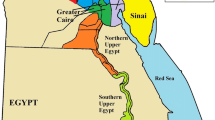Summary
We construct an inclusive fitness model of the relative selective advantage of sibmating and outbreeding behaviour, under the assumption that inbred offspring pay a fitness penalty. We are particularly interested in the question of whether such inbreeding depression is enough to generate a stable phenotypic polymorphism, with both kinds of breeding observed. The model predicts that, under diploidy, such a polymorphism is never found, but under haplodiploidy, it exists for a narrow range of parameter values. The inclusive fitness argument is technically interesting because care must be taken with reproductive values. We also present a corrected version of a one-locus genetic model for sibmating and find that the inclusive fitness and genetic models give identical results when selection is weak.
Similar content being viewed by others
References
Charlesworth, B. (1980) Models of kin selection. InEvolution of Social Behaviour: Hypotheses and Empirical Tests (H. Markl, ed.). Verlag Chemie, Weinheim, Germany.
Charnov, E.L. (1977) An elementary treatment of the genetical theory of kin selection.J. Theor. Biol.,66, 541–50.
Crow, J.F. and Kimura, M. (1970)An Introduction to Population Genetics Theory. Harper and Row, New York, NY, USA.
Feldman, M.W. and Christiansen, F.B. (1984) Population genetic theory of the cost of inbreeding.Am. Nat.,123, 642–53.
Getz, W.M., Kaitala, K. and Ratnieks, F.L.W. (1992) Invasion of sibmating genes in diploid and haplodiploid populations.Evol. Ecol.,6, 312–30.
Grafen, A. (1985) A geometric view of relatedness.Oxford Surv. Evol. Biol.,2, 28–89.
Hamilton, W. D. (1964) The genetical evolution of social behaviour, I and II.J. Theor. Biol.,7, 1–52.
Hamilton, W.D. (1975) Innate social aptitudes of man: an approach from evolutionary biology. InBiosocial Anthropology (R. Fox, ed.), pp. 133–55. John Wiley & Sons, New York, NY, USA.
Michod, R.E. and Hamilton, W.D. (1980) Coefficients of relatedness in sociobiology.Nature,288, 694–7.
Seger, J. (1981) Kinship and covariance.J. Theor. Biol.,91, 191–213.
Taylor, P.D. (1989) Evolutionary stability in one-parameter models under weak selection.Theor. Pop. Biol.,36, 125–43.
Taylor, P.D. (1990) Allele frequency change in a class-structured population.Am. Nat.,135, 95–106.
Author information
Authors and Affiliations
Rights and permissions
About this article
Cite this article
Taylor, P.D., Getz, W.M. An inclusive fitness model for the evolutionary advantage of sibmating. Evol Ecol 8, 61–69 (1994). https://doi.org/10.1007/BF01237666
Issue Date:
DOI: https://doi.org/10.1007/BF01237666




